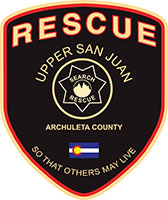Tips for the High Country
Going out for a hike in the high country?
Click here for a complete outline of how to prepare and what you will need.

Carry the Ten Essentials
Navigation: old fashion map (electronics can lose their charge), altimeter, compass, GPS device
Headlamp: plus extra batteries
Sun protection: sunglasses, sun-protective clothes, and sunscreen
First aid: including foot care and insect repellent (if required)
Knife: plus repair kit
Fire: matches, lighter and tinder, or stove as appropriate
Shelter: carried at all times (can be a lightweight emergency bivy)
Extra food: beyond minimum expectation
Extra water: beyond minimum expectation, or the means to purify
Extra clothes: sufficient to survive an emergency overnight

Food and Water
How Much is Enough
Hiking in the backcountry requires good hydration and sustained energy, especially in higher altitudes. Pack snacks that you can eat easily on the trail. For water, you can usually start with about two liters per person for the day, but adjust the amount depending on length and intensity of the hike, weather conditions, your age, sweat rate and body type. For more information on hydration check out this link Hydration Basics.
What snacks provide sustained energy? Go here for some ideas on what to take with you on your hike.

Clothing & Footwear
Comfort and Protection
The weather in the mountains changes quickly, do you have the right clothing to provide you with protection? Go here to find out just what you need!
Hiking shoes or hiking boots, how do you know which hiking footwear will work best for you? Check out this article.

Elevation, Climate and Terrain
How to Prevent and Reverse the Negative Impact
Hiking in the back country brings with it some risk, especially if you are ill prepared.
Always think about what could happen and prepare yourself with what you will need to have and to know if you run into an issue.
Altitude sickness - Prepare before you begin your adventure by traveling to your destination ahead of time giving yourself a few days of rest and hydration (water not alcohol).
Preparing for, recognizing, and treating altitude sickness is a must for backcountry hiking regardless of the number of miles you intend to hike. Go here for more information on altitude sickness.
Climate - It's a beautiful sunny day when you start out on your hike, when half an hour later a storm moves in and temperatures drop. Storms in the mountains roll up quickly, sometimes containing deadly lightening and torrential rains or snow. Are you prepared for changing weather? Check out this article on preparing for weather.

Basic First Aid
Know the Basics
Whether you are a seasoned hiker or just starting out it is important to know how to handle first aid in the back country. Being prepared is key. Check out this article for information on how to help someone with an injury in your group or someone you come across on the trail.

In an Emergency
Making an Emergency Call
The most important step you can take is to be prepared before you start you hike. Tell someone where you are going and when you intend to be back home.
Have an emergency plan along with the 10 essentials.
If you find yourself or someone else in a situation that requires SAR, be sure you have your location coordinates and a good assessment of the situation, then call or text 911 if you can.
This blog contains some helpful information to help you in your emergency planning.

